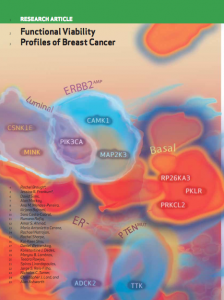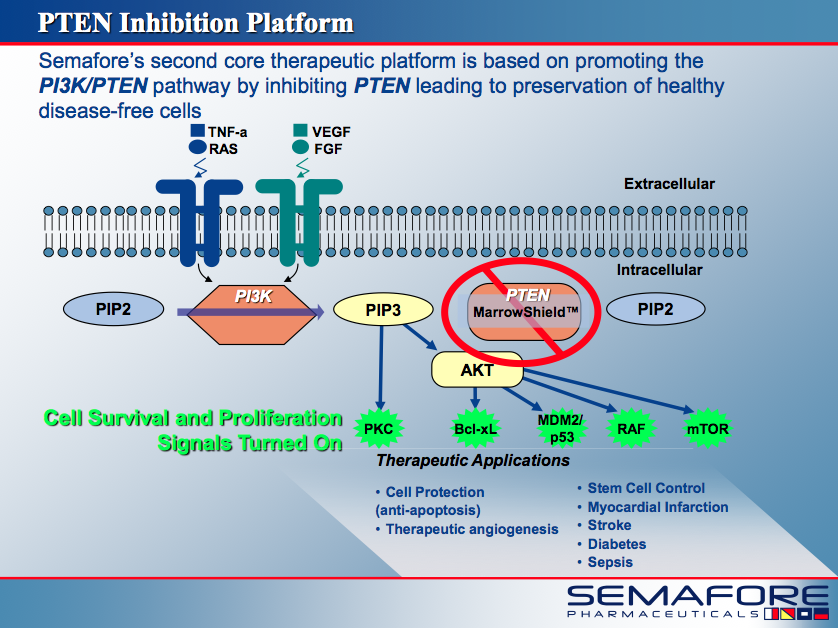If you're new here, you may want to subscribe to my blog by Email or RSS feed. You get ONLY the blog sent to you from that address (I respect your privacy). Thanks for visiting!
An interesting new paper has just appeared in the latest online first edition of Cancer Discovery, and?discusses a functional classification for evaluating the alterations in breast cancer to ultimately determine which are drivers and passengers.

Source: Cancer Discovery
The researchers are essentially using an integrated approach of combining genomics and gene expression profiles overlaid with functional data to create a systematic map.
The goal was to determine if it will help identify key vulnerabilities in genetic mutations and the breast cancer genome as part of a joint Stand Up To Cancer (SU2C) and American Association for Cancer Research (AACR) initiative.
?We have carried out a functional genetic screen in >30 commonly used models of breast cancer to identify genes critical to the growth of specific breast cancer subtypes. In particular, we describe potential new therapeutic targets for PTEN-mutated cancers and for estrogen receptor?positive breast cancers.
We also show that large-scale functional profiling allows the classification of breast cancers into subgroups distinct from established subtypes.?
Should such an approach be successful, it is easy to see how it could be replicated in other tumour types.
The beauty of this methodology, while complex, is we know that not all mutations and aberrations that appear are critical to the tumour?s survival, so creating a road map will enable clinicians to better design trials in a more personalised medicine approach to treatment. ?Once we know a patients particular molecular make up and which aberrations are important, then treatment can be more selective and appropriate based on the profile and biomarkers.
Although conceptually, this article was about the idea of figuring out the critical driver oncogenes, they also focus on PTEN mutations and PIK3CA mutations as potential targets, since loss of PTEN is associated with many cancers, including breast cancer. Unravelling the heterogeneity and key targets amy well lead to new therapeutic approaches.
I first heard of PTEN inhibitors a while back in relation to a small private start-up biotech called Pintex, although they were subsequently sold to a UK company, Vernalis. ?Vernalis is developing several interesting compounds including Heat-shock proteins (Hsp) and has partnerships with several large pharma companies. ?I don?t think any of the PTEN inhibitors survived though and it appears to be a transfer of assets that was more valuable than the compounds they had in development.
Since then, the lead PTEN inhibitor appears to be Semafore?s SF1670, which had a recent preclinical publication in Blood magazine (see references below) and may be hitting clinical trials in the next year or two. ?One interesting approach that might evolve is a ?set-up-knock-down? approach in tumours that have loss of PTEN and follow this with, say, a PI3K inhibitor. ?Semafore also have one of those too, in SF1126, making such a dual strategy in sequencing potentially feasible:

Source: Semafore
As Michel Becker, Semafore?s acting CEO succinctly described it to me:
?The PTEN inhibitor?s role would be to stimulate quiescent cells into a treatable/PI3K addicted state.?
Check out Wicha et al., (2006) for more details on this concept. ?Given that PI3K inhibitors have, at best, resulted in stable disease in the tumour types tested to date (including breast cancer), it would be interesting to see if this would lead to better response rates and ultimately, outcomes.
Brough et al?s., (2011) research into loss of PTEN and PIK3CA mutations (mutant not wild type or point mutations) in breast cancer is most interesting, but there is still a long way to go. We need to know more of the underlying biology and the impact of inhibition of targets and the consequences. We should then be able to figure out the optimal targets and logical combination strategies that will lead to responses that are both superior and more durable than currently seen in patients with breast cancer and other tumour types.
The good news is that the basic research is looking fairly promising to date. ?I can say without hesitation that combination strategies are more likely to lead to better results than targeting either PTEN or PI3K alone.
?
References:
![]() Brough, R, Frankum, JR, Sims, D, Mackay, A, Mendes-Pereira, AM, Bajrami, I, Costa-Cabral, S, Rafiq, R, Ahmad, AS, Cerone, MA, Natrajan, R, Sharpe, R, Shiu, K-K, Wetterskog, D, Dedes, KJ, Lambros, MB, Rawjee, T, Linardopoulos, S, Reis-Filho, JS, Turner, NC, Lord, CJ, & Ashworth, A (2011). Functional Viability Profiles of Breast Cancer.?Cancer Discovery : 10.1158/2159-8290.CD-11-0107
Brough, R, Frankum, JR, Sims, D, Mackay, A, Mendes-Pereira, AM, Bajrami, I, Costa-Cabral, S, Rafiq, R, Ahmad, AS, Cerone, MA, Natrajan, R, Sharpe, R, Shiu, K-K, Wetterskog, D, Dedes, KJ, Lambros, MB, Rawjee, T, Linardopoulos, S, Reis-Filho, JS, Turner, NC, Lord, CJ, & Ashworth, A (2011). Functional Viability Profiles of Breast Cancer.?Cancer Discovery : 10.1158/2159-8290.CD-11-0107
Li, Y., Prasad, A., Jia, Y., Roy, S., Loison, F., Mondal, S., Kocjan, P., Silberstein, L., Ding, S., & Luo, H. (2011). Pretreatment with phosphatase and tensin homolog deleted on chromosome 10 (PTEN) inhibitor SF1670 augments the efficacy of granulocyte transfusion in a clinically relevant mouse model.?Blood, 117 (24), 6702-6713 DOI: 10.1182/blood-2010-09-309864
Wicha, M. (2006). Cancer Stem Cells: An Old Idea?A Paradigm Shift Cancer Research, 66 (4), 1883-1890 DOI: 10.1158/0008-5472.CAN-05-3153
spyware doctor cake boss gastritis cats crowne plaza crowne plaza bahamas
No comments:
Post a Comment
Note: Only a member of this blog may post a comment.